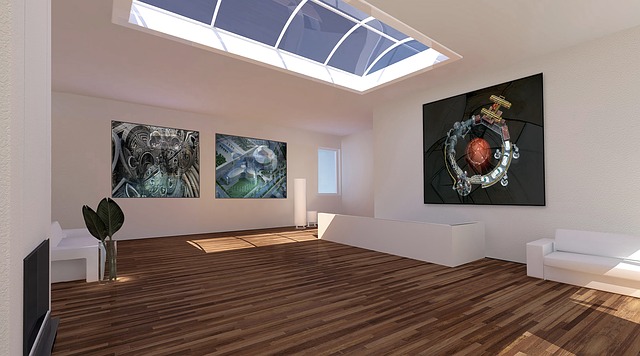Creating a comfortable and productive personal space in shared student housing requires understanding and communicating unique needs, establishing dedicated zones for study, relaxation, and socializing, using creative storage solutions, maintaining clear communication, and sharing cleaning responsibilities. Student living tips emphasize maximizing limited space through organization, adopting personal boundaries with dividers, personalizing spaces with familiar items, implementing clever storage, and incorporating personal touches to enhance overall well-being and academic success.
Creating personal space in shared student housing can be challenging, but with intentional design and open communication, it’s achievable. This guide offers practical student living tips for transforming your shared environment into a sanctuary. From understanding your needs and maximizing shared areas to setting boundaries, utilizing storage solutions, and incorporating personal touches, these strategies help you thrive in close quarters. Discover how to make your space feel like home amidst the hustle and bustle of student life.
- Understanding Your Needs: Define Your Personal Space Requirements
- Maximizing Shared Areas: Tips for Collaborating with Roommates
- Setting Boundaries: Creating a Calm Zone in a Bustling Environment
- Utilizing Storage Solutions: Keeping Your Belongings Organized
- Incorporating Personal Touches: Making Your Space Feel Like Home
Understanding Your Needs: Define Your Personal Space Requirements

Creating a personal space in shared student housing requires understanding your unique needs. Every student has different preferences and requirements when it comes to their living environment, which often need to be balanced with those of roommates or flatmates. Before you begin, take time to reflect on what makes you feel comfortable and productive. Consider factors like study habits, social interactions, and personal hobbies—all of which influence your ideal space setup.
Student living tips suggest evaluating the amount of quiet time you require, the need for dedicated study areas, and the level of privacy desired. Communicating openly with roommates about these needs is essential to ensuring everyone can thrive in their respective spaces. Defining your personal space requirements early on fosters a harmonious living environment where everyone feels respected and considered.
Maximizing Shared Areas: Tips for Collaborating with Roommates

In shared student housing, maximizing the limited space is key. One effective strategy is to collaborate with your roommates to make the most of common areas. Start by having an open conversation about each person’s needs and preferences. Designate specific zones for different activities—a study corner, a relaxation area, or even a mini-kitchen for socializing. Flexibility is crucial; be open to adapting spaces as needed. Consider using creative storage solutions like shelves or baskets to organize items and free up floor space.
Implementing clear communication and shared responsibility for maintaining these areas fosters a harmonious environment. Regularly cleaning and organizing together not only keeps the spaces tidy but also strengthens your roommate relationships. Remember, effective collaboration can transform your shared living space into a productive and enjoyable student living experience, enhancing your overall university life.
Setting Boundaries: Creating a Calm Zone in a Bustling Environment

In shared student housing, where bustling activity and diverse personalities converge, establishing personal boundaries is a powerful tool for creating a sense of calm and comfort. This involves carving out dedicated spaces that cater to individual needs and preferences, ensuring privacy and tranquility amidst the hustle and bustle. Student living tips include incorporating subtle yet effective dividers, such as curtains or room dividers, to separate your sleeping and study areas from common spaces. By doing so, you can control light, sound, and visual distractions, fostering an environment conducive to relaxation and focus.
Moreover, personalizing your designated zone with familiar items—a favorite book, a small plant, or a cozy blanket—can significantly enhance your sense of ownership and well-being. These simple additions serve as anchors in a shared environment, providing a sanctuary where you can unwind, study, or simply escape the daily buzz. Embracing student living tips that prioritize personal space empowers residents to navigate their immediate surroundings with balance, ensuring they can thrive academically while nurturing their mental health.
Utilizing Storage Solutions: Keeping Your Belongings Organized

Creating personal space in shared student housing can be a challenge, but one effective strategy is to implement clever storage solutions. This involves maximizing your limited space by utilizing every inch available. For instance, invest in stackable shelves or under-bed storage containers to store seasonal clothing or books not in immediate use. Over-the-door organizers and hanging racks are also useful for maximizing vertical space and keeping smaller items like shoes, bags, or accessories tidy.
Integrating these storage options not only keeps your belongings organized but also contributes to a calmer and more relaxed environment. With everything having its place, you can reduce clutter and easily find what you need when you need it. As a result, your living space feels more personalized and comfortable, enhancing your overall student living experience. Remember, efficient storage is key to transforming shared housing into a welcoming sanctuary that feels truly yours.
Incorporating Personal Touches: Making Your Space Feel Like Home

Incorporating personal touches is a powerful way to transform your shared student housing into a space that feels like home. Student living tips include adding unique decorations, photos, and mementos from your past experiences. These items not only make your room distinct but also serve as reminders of your journey so far. Hang up posters or artwork that reflect your interests and hobbies; display a collection of books or souvenirs from different places you’ve visited.
Using familiar colors, textures, and lighting can further enhance the comfort factor. Soft lamps, cozy blankets, and comfortable furniture arranged in ways that feel natural to you—all these elements contribute to creating a sanctuary within the bustling environment of student living. These personal touches not only make your space more inviting but also foster a sense of belonging in a shared living space.






